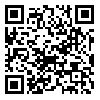Volume 10, Issue 3 (Summer 2020)
PTJ 2020, 10(3): 177-184 |
Back to browse issues page
1- Department of Corrective Exercise And Sport Injury, Faculty of Physical Education and Sport Sciences, Allemeh Tabataba'i University, Tehran, Iran.
Abstract: (2032 Views)
Background: Jumping and landing are common activities in soccer, i.e., associated with Anterior Cruciate Ligament (ACL) injuries in the players, especially when experiencing fatigue. The current study aimed to compare the kinematics of the lower limb joints in jump-landing maneuver among soccer players with and without a history of anterior cruciate ligament reconstruction.
Methods: Among active soccer players in the provincial league level in Hamedan Province, Iran, 12 individuals with the intact knee (control group), and 12 individuals with 6 to 24 months post anterior cruciate ligament reconstruction (experimental group) were selected by convivence sampling method as the study participants. During the jump-landing task, the range of motion and the joints' angle at the contact instance were measured before and after performing plyometric fatigue protocol using the Vicon motion capture system. Multivariate Analysis of Variance (MANOVA) at a significance level of P<0.05 was used for intergroup comparisons.
Results: Plyometric fatigue did not affect most of the kinematic variables before and after fatigue experience. Besides, only the hip range of motion revealed a significant difference between the study groups (P=0.38).
Conclusion: Fatigue had more effect on some variables in individuals with ACL reconstruction, including the left and right hips angles. Moreover, there was a significant difference in some variables between the study groups; the range of motion of the left hip, the contact angle of the right hip before fatigue experience, and the contact angle of the right and left hips after fatigue. In general, a proper rehabilitation program is recommended for athletes with ACL reconstruction to reduce the risk of recurrence of jumping movements in exercise.
Methods: Among active soccer players in the provincial league level in Hamedan Province, Iran, 12 individuals with the intact knee (control group), and 12 individuals with 6 to 24 months post anterior cruciate ligament reconstruction (experimental group) were selected by convivence sampling method as the study participants. During the jump-landing task, the range of motion and the joints' angle at the contact instance were measured before and after performing plyometric fatigue protocol using the Vicon motion capture system. Multivariate Analysis of Variance (MANOVA) at a significance level of P<0.05 was used for intergroup comparisons.
Results: Plyometric fatigue did not affect most of the kinematic variables before and after fatigue experience. Besides, only the hip range of motion revealed a significant difference between the study groups (P=0.38).
Conclusion: Fatigue had more effect on some variables in individuals with ACL reconstruction, including the left and right hips angles. Moreover, there was a significant difference in some variables between the study groups; the range of motion of the left hip, the contact angle of the right hip before fatigue experience, and the contact angle of the right and left hips after fatigue. In general, a proper rehabilitation program is recommended for athletes with ACL reconstruction to reduce the risk of recurrence of jumping movements in exercise.
Type of Study: Research |
Subject:
General
Received: 2020/04/8 | Accepted: 2020/06/22 | Published: 2020/07/1
Received: 2020/04/8 | Accepted: 2020/06/22 | Published: 2020/07/1
| Rights and permissions | |
 |
This work is licensed under a Creative Commons Attribution-NonCommercial 4.0 International License. |





